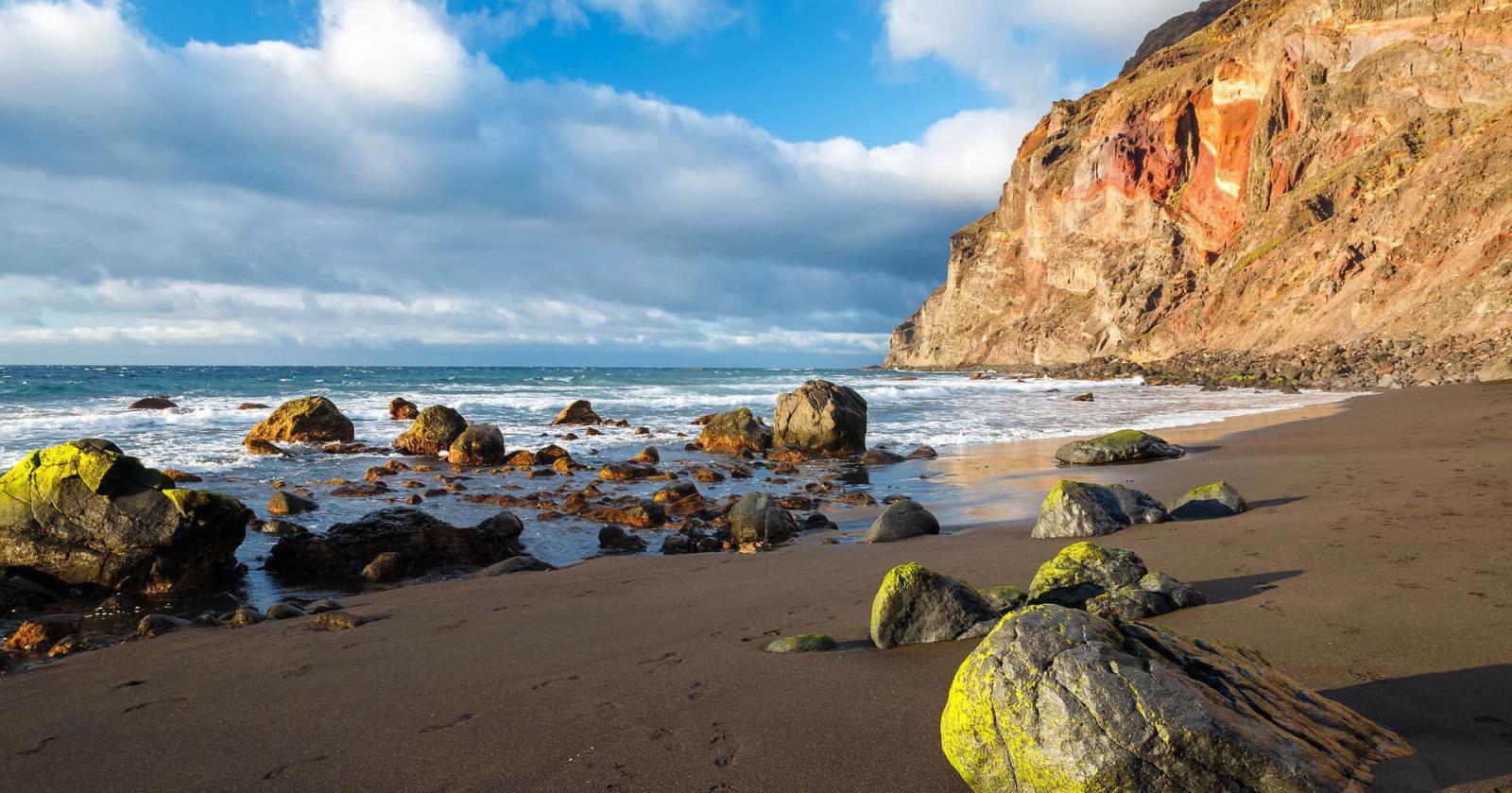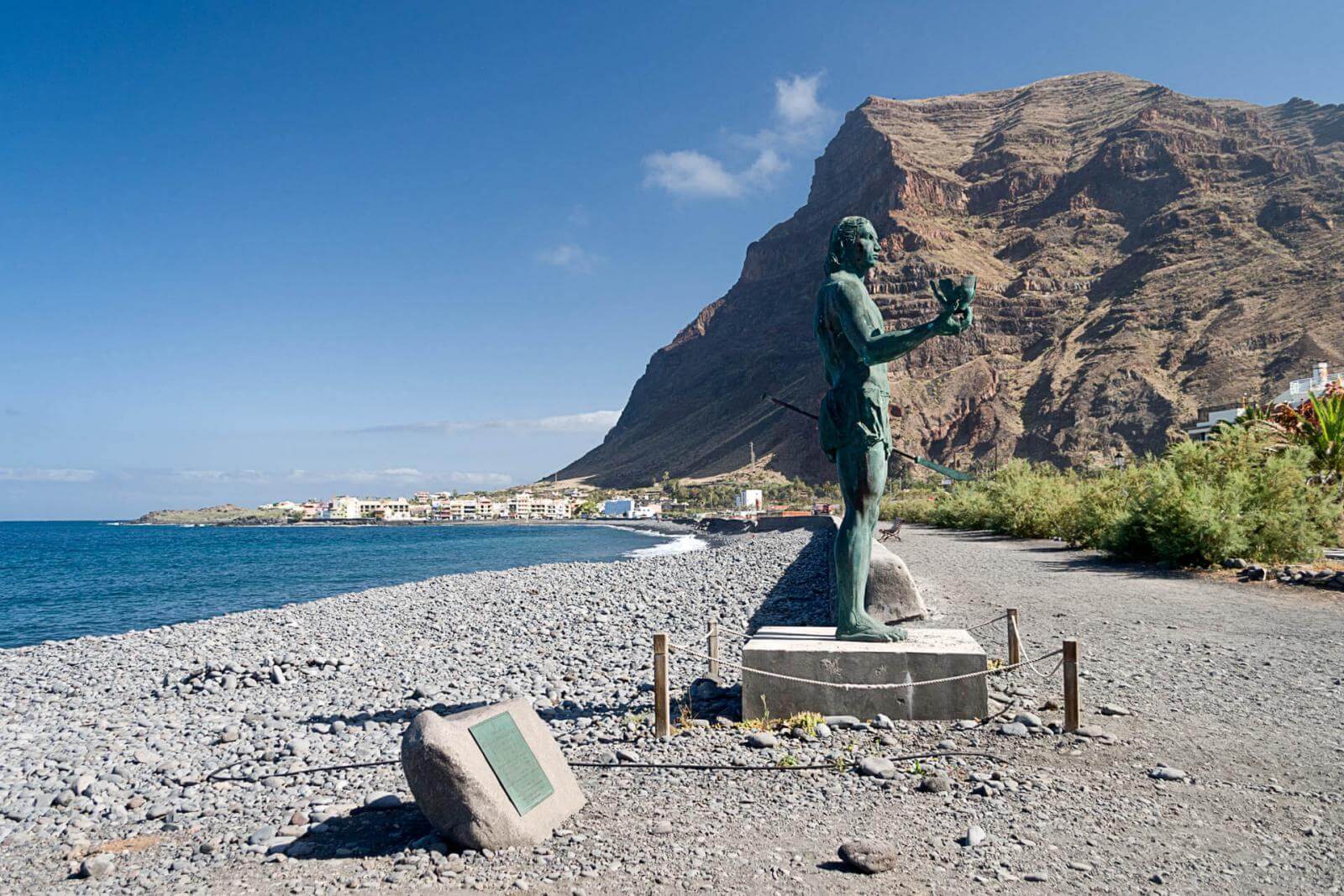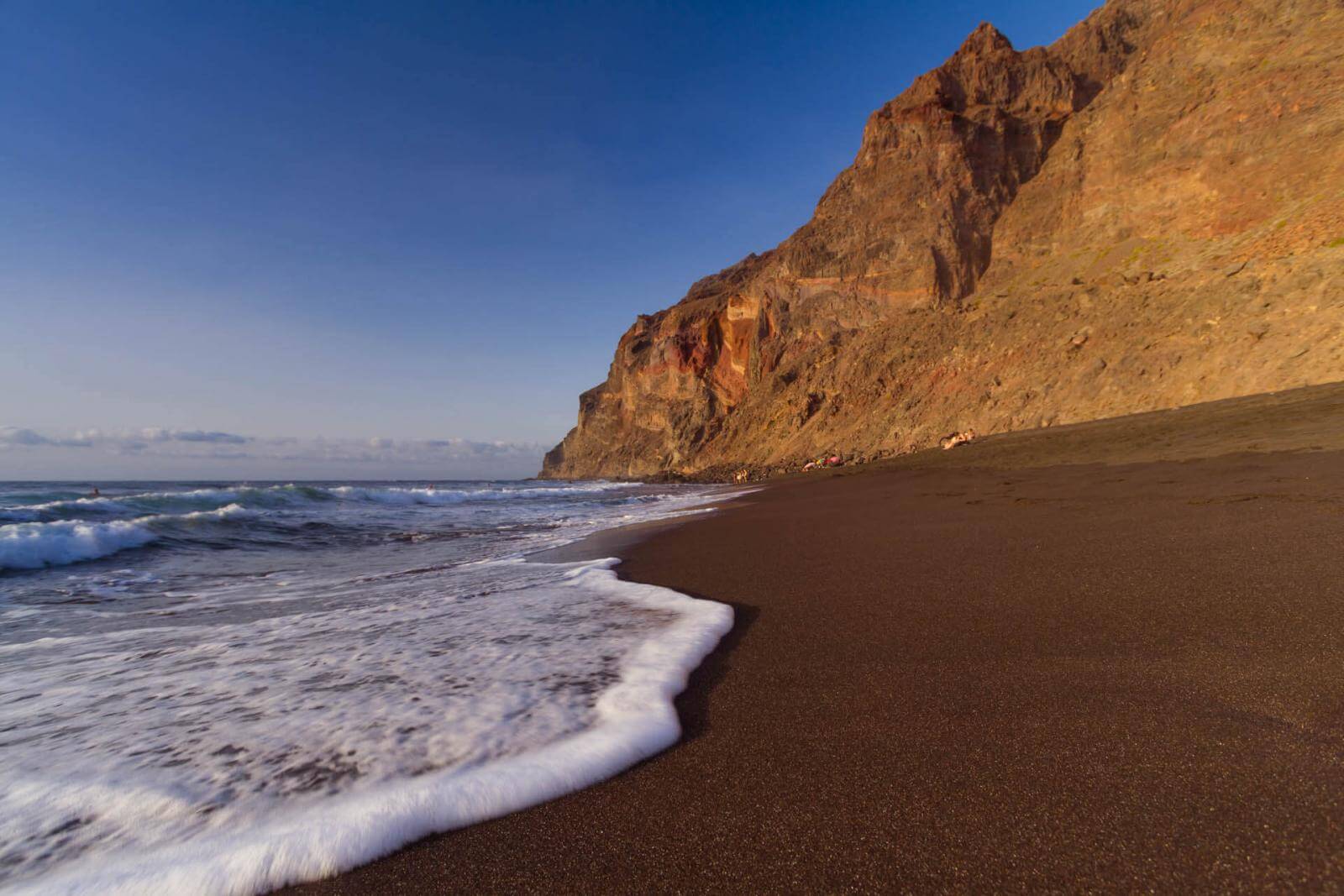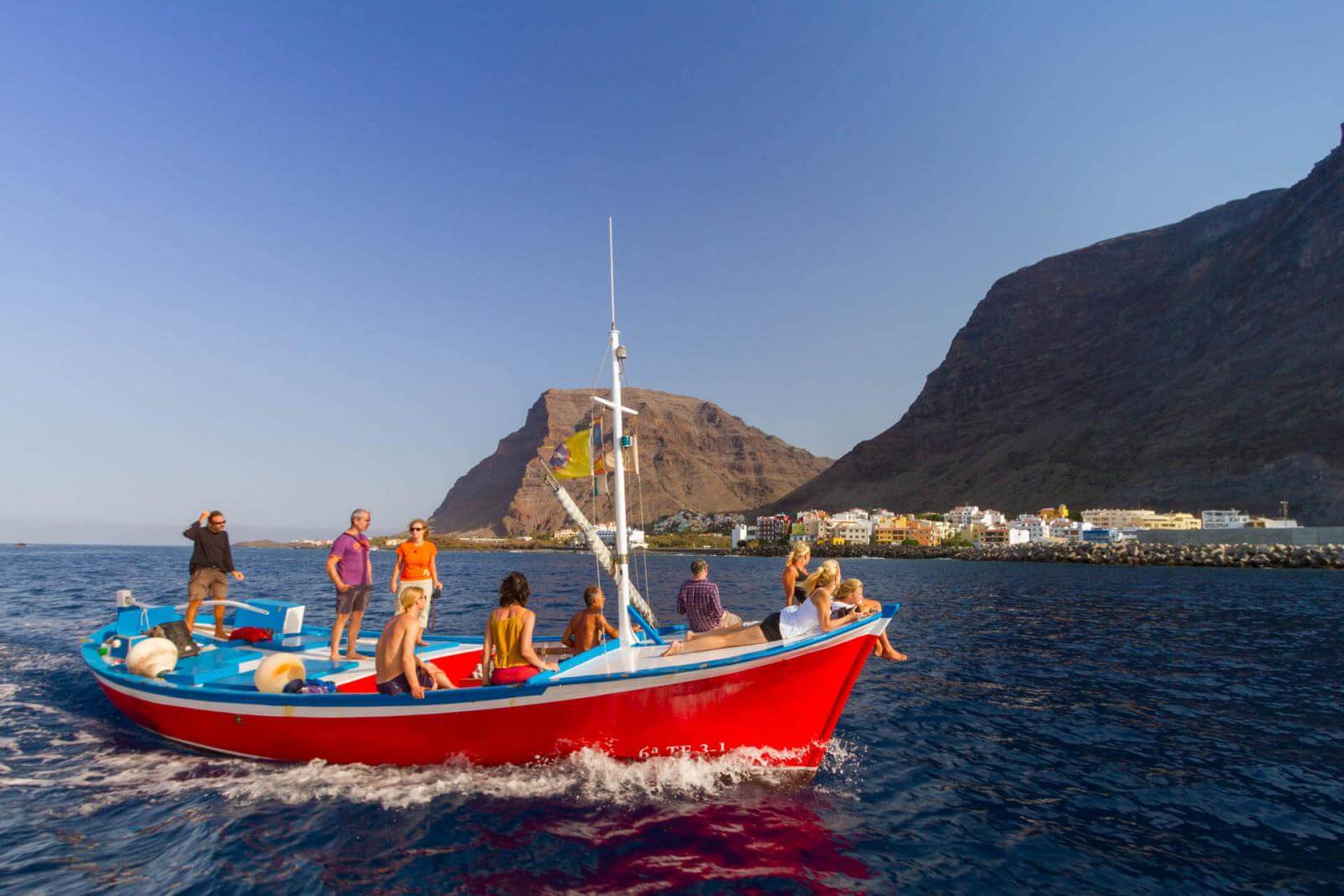Few places are capable of uniting the idealism of the past with the magic of the present at the same time. Valle Gran Rey is. With its beaches, nature and ever mild temperatures, it’s the perfect place to disconnect and reconnect at the same time. Where history, culture and gastronomy are there every step of the way.
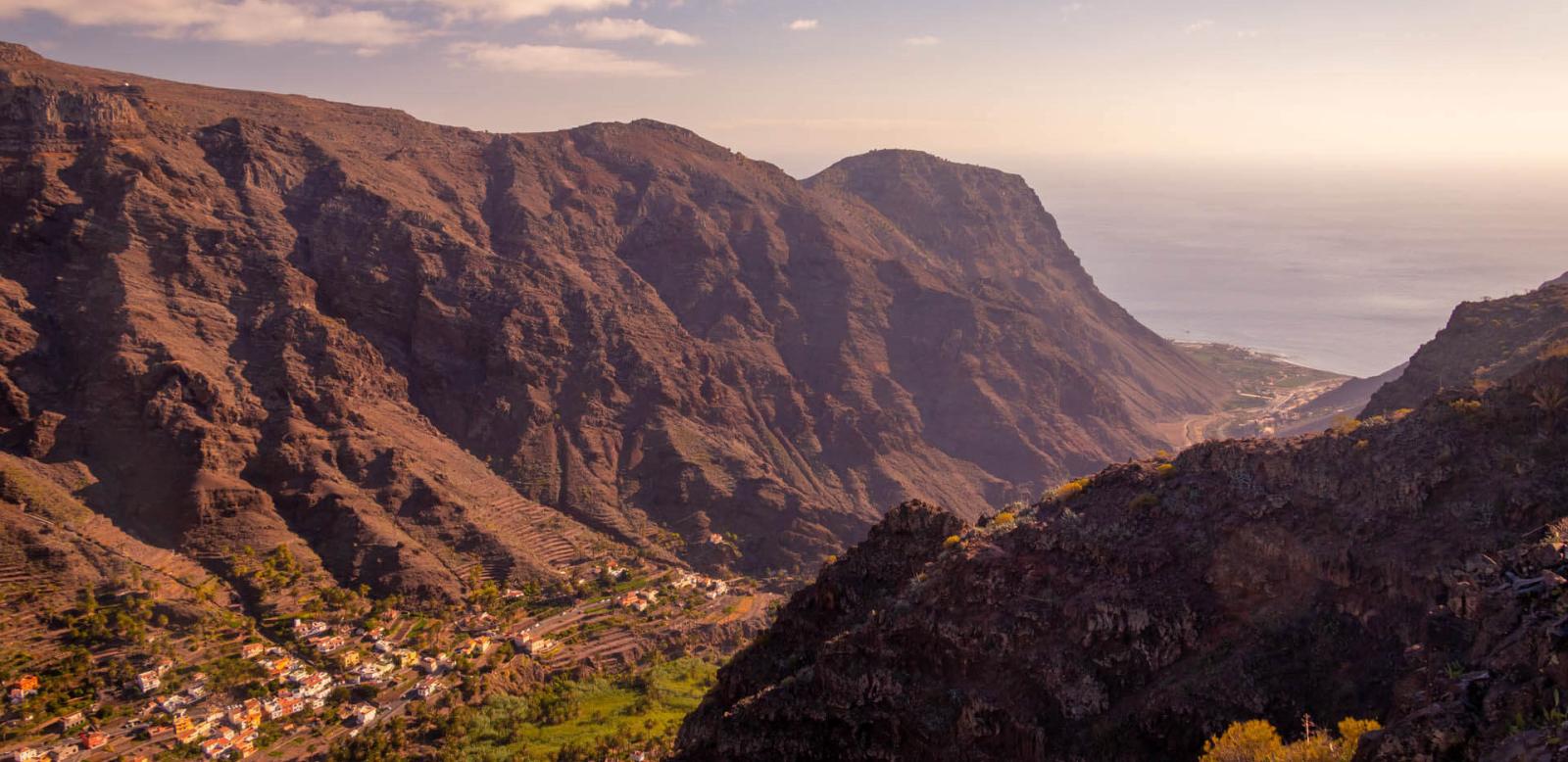
Hupalupa, King of La Gomera
Located in the southwest of the island, Valle Gran Rey is bordered only by Vallehermoso. It has an area of 33 square kilometres and reaches a maximum height of about 1000 metres above sea level. It is named after the valley where the chieftain Hupalupa lived, a native of La Gomera who played a lead role in the rebellion on the island in 1488.
It is one of the few places on the island where the population has risen in recent years, reaching its highest numbers ever in the 21st century, with over 4600 inhabitants. The population is spread out in neighbourhoods and small villages along the ravine or at the coast, around the valley, giving rise to one of the whole island’s most typical views: traditional houses with terraces full of crops for personal use with stunning palm groves in the background.
Far removed from mass tourism, you mustn’t miss the chance to see the mountains of Arure and Las Hayas or the colourful fishermen’s boats, the fine volcanic sand and the tropical crops that are abundant in the lower areas of the island. You can also enjoy Garajonay National Park and its hiking trails in this municipality.
The coast of Valle Gran Rey
The legend passed down by word of mouth says that the Lord of La Gomera would bathe in the Charco del Conde and the Countess would bathe in a nearby pond. From both spots, you can see the place known as the Baja del Secreto or Baja del Concejo, where, according to the legend, the Lord of La Gomera, Hernán Peraza ‘the Younger’, was executed in the year 1488. Nowadays, in addition to being a perfect place for children to enjoy their first contact with the sea, for example, it has also been declared a site of scientific interest by the regional government.
Alternatives to the Charco del Conde include Vueltas Beach, La Puntilla and La Calera Beach – the largest in the municipality. At La Puntilla Beach, there is a sculpture of Hautacuperche, the leader of the historical rebellion on La Gomera.
But of all the beaches in Valle Gran Rey, the best known is Playa del Inglés, a beautiful beach that opens up towards the northwest under the La Mérica Ridge. The sea tends to be rough here, so you have to be careful if you want to go swimming. It’s usually calmer in the summer. This is the perfect place to watch the sunset and see the high mountain ridges tinged red by the evening sky.
Valle Gran Rey has the largest infrastructure of tourist accommodation on the island, as well as all sorts of recreational and leisure services and activities. The main ones are whale and dolphin watching in the south of the island, as well as water sports, bicycle touring and hiking.
Unlike the rest of the main festivities on the island, Valle Gran Rey celebrates its festivities in winter. The traditional ‘Ramo’ (bunch of fruit and vegetables) is made and paraded in a procession as an offering to the patron saint of Valle Gran Rey, Nuestra Señora de Los Santos Reyes. Locals and tourists gather at her shrine to celebrate this festivity.
Home of the Giant Lizard
Valle Gran Rey is the site of the recovery centre for the Giant Lizard of La Gomera, where this unique species is bred and protected. It was found all over the island thousands of years ago, but was more recently thought to be extinct, until the 1990s.
